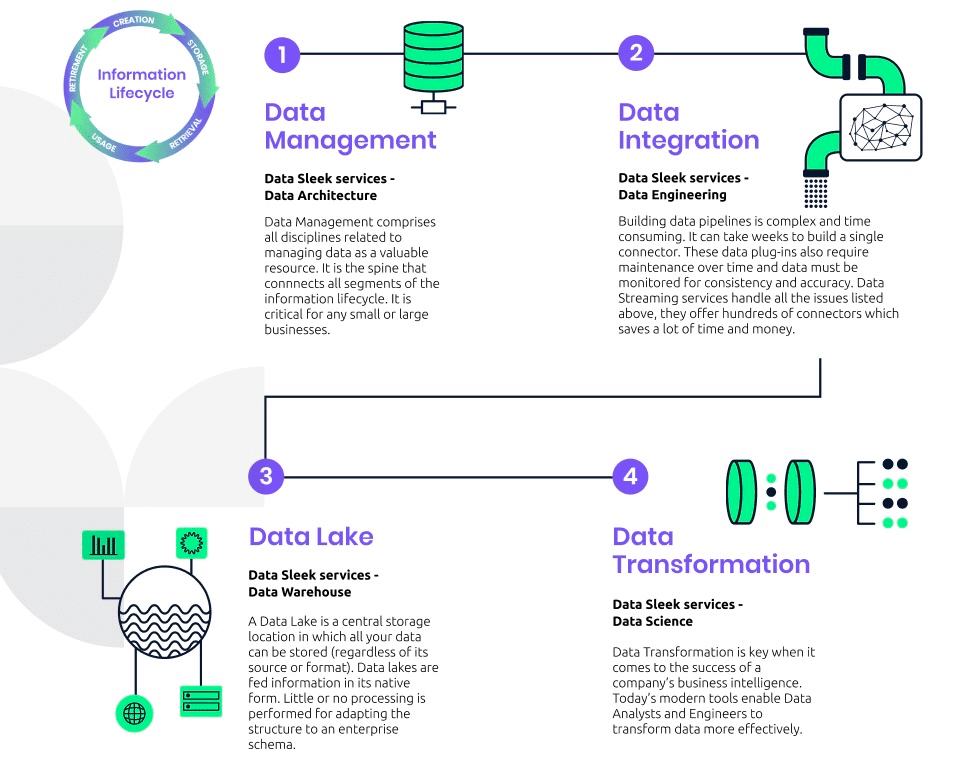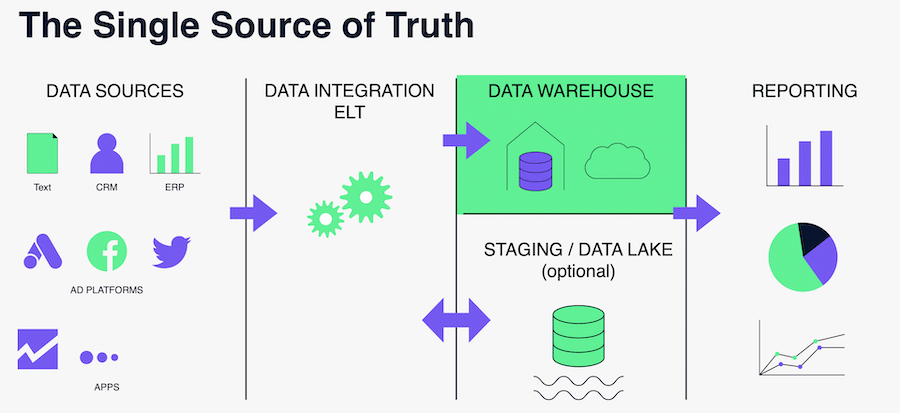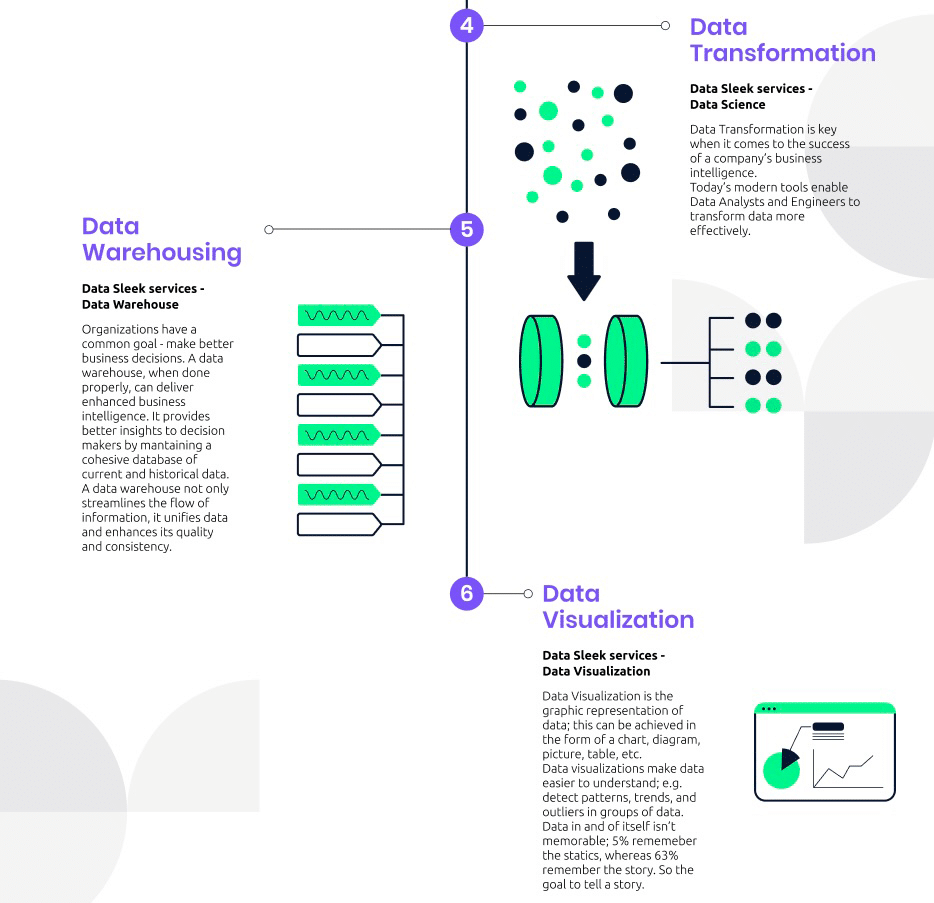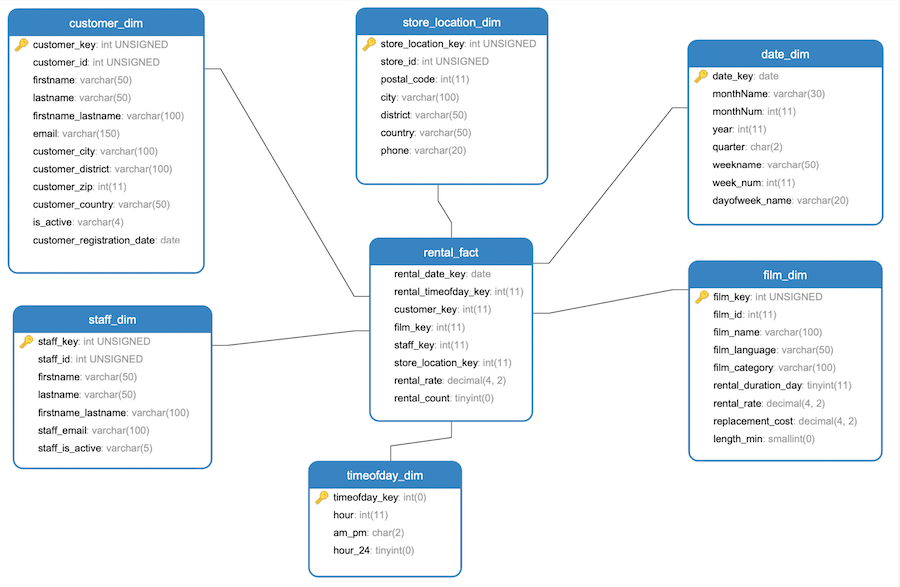What is Data Architecture?
I. Introduction
Data architecture plays a crucial role in managing data assets for businesses. It helps collect, store, process, and utilize data to drive innovation and efficiency. A well-designed data architecture ensures data security, regulatory compliance, and accessibility. We provide valuable insights for designing a data architecture that aligns seamlessly with your business needs.
In the following sections, we will uncover the symptoms of poor data architecture, assess current structures, and provide insights into designing a data architecture that aligns seamlessly with your unique business needs.
II. Understanding Data Architecture
Data architecture is a complex and multifaceted concept integral to data management disciplines and any organization dealing with data. At its heart, data architecture encompasses the rules, policies, standards, and models that govern and define the type of data collected and how it’s stored, managed, and used within an organization. This section aims to demystify data architecture, breaking down its essential components and illustrating its role in modern data management and business strategy.

A. Definition and Key Components
Data architecture diagram is like the blueprint of an organization’s data ecosystem. It includes various components such as physical data models, data flows, data warehouses, data storage, databases, and data integration tools. Each of these plays a specific role:
- The physical Data Model represents the data elements and their relationships. A physical data model provides a structured framework for storing, processing, and accessing data.
- Data Warehouses and Databases are the storage hubs where data is aggregated, organized, and maintained. While databases handle day-to-day transactional data, data warehouses store and analyze large volumes of historical data.
- Data Integration Tools: These tools perform Extract, Transform, and Load (ETL) operations, ensuring that data from various sources is harmonized and made available for analysis.
B. Role in Data Management and Business Strategy
Data architecture is not just about technology; it’s a strategic element of enterprise architecture that supports business goals:
- Enabling Data Accessibility and Quality: Good data architecture ensures that data is not only accessible to those who need it but also maintains its quality and consistency, which is crucial for reliable analysis and decision-making.
- Facilitating Scalability and Flexibility: As businesses grow, their data architecture must evolve. A well-planned architecture allows scalability and flexibility, accommodating increased data volumes and new data types.
- Supporting Business Intelligence and Analytics: By organizing data in a structured manner, data architecture lays the foundation for practical business intelligence and analytics, which are essential for informed decision-making and strategic planning.
C. Evolution of Data Architecture with Technology Trends
The evolution of data architecture relies on technological advancements:
- From Monolithic to Decentralized Systems: The shift from monolithic systems to microservices and cloud-based architectures has transformed data architecture, making it more modular and distributed.
- Big Data and Real-Time Analytics: Big data technologies have led to the inclusion of unstructured data in data architecture, while real-time analytics requires architectures that can process and analyze data streams swiftly.
- AI and Machine Learning Integration: AI and machine learning are increasingly integrated into data architectures to enhance predictive analytics and automate data management tasks.
III. The Purpose of Data Architecture
The purpose of data architecture lies at the intersection of business strategy and technical execution. It and enterprise architecture methodology is a critical foundation for any organization to harness data’s power effectively. This section outlines the essential purposes of data architecture and its impact on business operations.
A. Supporting Business Goals and Objectives
At its core, data architecture is designed to align with and support an organization’s overarching goals and objectives. A team of data architects and their data scientists and engineers can help achieve these goals. Whether it’s to drive sales, improve customer service, or streamline operations, a well-crafted data architecture ensures that the data necessary to achieve these goals is organized, accessible, and usable. A clear structure for data assets enables businesses to make strategic decisions based on reliable and comprehensive data insights.
B. Enhancing Decision-Making through Data-Driven Insights
Data architecture plays a pivotal role in enhancing decision-making processes. By integrating data from various sources and presenting it in a coherent format, it provides businesses with actionable insights. This data-driven decision-making approach helps identify market trends, understand customer behaviors, and predict future scenarios, reducing guesswork and enabling more strategic planning and execution.

C. Ensuring Scalability and Flexibility in Data Handling
The ability of data pipelines to scale and adapt is crucial in today’s dynamic business environment. Data architecture provides a scalable framework that can grow with the business, accommodating increasing volumes of data and new types of data sources. This flexibility is essential for companies to remain agile and responsive to market changes and technological advancements.
D. Facilitating Data Security and Compliance
Data architecture is crucial for businesses today. It ensures sensitive information is secure and compliant with regulations. It also supports business objectives and decision-making and enables scalability and flexibility. Therefore, investing in a solid data architecture is essential for success.
IV. Why Data Architecture is Crucial for Your Business
Because data is the lifeblood of business success, understanding and leveraging the exemplary data architecture is not just beneficial – it’s essential. This section aims to inform and convince you, the business leader or decision-maker, why investing in a robust data architecture is critical for your business’s future.
A. Aligning Data Strategy with Business Strategy
Data plays a crucial role in unlocking your company’s potential. You can analyze information contributing to your success by designing a tailored data architecture. Strong alignment between data and objectives is critical to making informed decisions and achieving your goals.
B. Improving Efficiency and Reducing Operational Costs
Efficiency is crucial for success. A solid data architecture can streamline processes, minimize errors, and save costs. Redirecting valuable resources from data processing to strategic initiatives can take your business to the next level.
C. Enhancing Customer Experience through Better Data Insights
Understanding and anticipating customer needs is critical in today’s customer-centric business landscape. Data architecture enables you to integrate and analyze customer data from various touchpoints, providing a 360-degree view of your customer. This insight allows you to tailor your products, services, and interactions to meet and exceed customer expectations, fostering loyalty and driving long-term revenue growth.
D. Case Studies: Success Stories of Effective Data Architecture Implementation
Consider the success stories of businesses that have embraced robust, modern data architectures. For instance, a retail company that implemented an advanced data architecture saw a significant increase in sales due to targeted marketing strategies based on customer data insights. Or a healthcare provider that improved patient outcomes through better data-driven decision-making. These success stories are not just anecdotes but evidence of the transformative power of effective data architecture.
V. Symptoms of Poor Data Architecture
Recognizing the symptoms of poor data architecture is crucial for any business aiming to thrive in the data-driven landscape of today’s economy. In this section, we will inform you about these symptoms and illustrate why addressing them is essential for the health and success of your business.
A. Data Silos and Inconsistent Data Formats
One of the most telling signs of inadequate data architecture is the presence of data silos. When raw data is isolated and inaccessible across different departments, it hinders your organization’s ability to make informed, cohesive decisions. Similarly, inconsistent data formats can lead to inefficiencies and errors in data processing. These issues slow down operations and create barriers to gaining a unified view of your business performance, customer insights, and market opportunities.

B. Challenges in Data Accessibility and Quality Issues
If your team needs help accessing the correct data at the right time or cleaning and organizing it excessively, it indicates poor data architecture. High-quality, accessible data is the cornerstone of agile decision-making. When data is fragmented, outdated, or poorly quality, it leads to misguided strategies and missed opportunities. In today’s fast-paced business environment, quickly accessing and relying on accurate data is not just an advantage; it’s a necessity.
C. Slowed Decision-Making Processes and Operational Inefficiencies
Inefficient data management resources and architecture can significantly slow down your decision-making processes. When teams are bogged down by cumbersome data retrieval and analysis, response times to market changes or customer needs are delayed. This sluggishness can be particularly detrimental in industries where rapid decision-making is vital to staying competitive. Operational inefficiencies from poor data handling can also lead to increased costs and reduced productivity, directly impacting your bottom line.
D. Security Vulnerabilities and Compliance Risks
A modern and integrated data architecture is essential for protecting your business from security breaches and compliance risks. Weak, data architecture frameworks can result in security gaps and complicate meeting regulations such as GDPR or HIPAA. Addressing these challenges through a well-planned data architecture strategy is necessary for any business that wants to harness data as a strategic asset. A robust and modern data architecture can protect your company, improve operational efficiencies, and drive your success.
VI. Assessing Your Current Data Architecture
For businesses navigating the complex digital landscape, assessing your current data architecture is not just a routine check-up; it’s a critical analysis that can reveal the health and potential of your organization’s data capabilities. This section will guide you through this assessment process, emphasizing data usage and its importance in enhancing your business’s data-driven strategies.
A. Key Indicators of a Robust Data Architecture
It’s essential to understand what constitutes a robust data architecture. Look for these key indicators:
- Integration and Accessibility: Data should be easily accessible to authorized personnel, regardless of department or location, ensuring seamless integration across various platforms and systems.
- Scalability and Flexibility: Your architecture should be able to handle increasing volumes of data and adapt to new technologies without significant overhauls.
- Data Quality and Consistency: High-quality, consistent data is a hallmark of good architecture, enabling accurate analysis and decision-making.
- Security and Compliance: Robust data architecture must include strong security measures and comply with relevant data protection regulations.
B. Tools and Methodologies for Evaluating Data Architecture Health
There are several tools and methodologies available to assess the health of your data architecture:
- Data Architecture Audits: Conducting regular audits can help identify inefficiencies, redundancies, and risks in your current architecture.
- Performance Metrics Analysis: Analyzing performance metrics can reveal how well your data systems cope with their demands.
- Feedback from End-Users: Gathering feedback from those interacting with your data systems daily provides insights into practical issues and bottlenecks.
C. Common Gaps in Traditional Data Architectures
Many businesses find that their data architecture falls short in areas such as:
- Handling Big Data: Traditional architectures often need help to process and analyze large datasets efficiently.
- Real-Time Data Processing: The ability to process and analyze data in real-time is becoming increasingly important, especially in older systems.
- Cloud Integration: As cloud computing becomes more prevalent, the ability to integrate with cloud services is a crucial aspect of modern data architecture.
VII. Designing a Data Architecture That Fits Your Needs
Designing a data architecture that aligns with your business needs is not just a technical endeavor; it’s a strategic investment that can significantly impact your organization’s efficiency, agility, and overall success. This section will guide you through designing a tailored data architecture, emphasizing its critical role in driving business growth and innovation.
A. Identifying Business-Specific Data Needs and Goals
The first step in designing your
data architecture framework is thoroughly understanding your unique business needs and goals. This understanding should encompass the following:
- Business Objectives: Align your data architecture with your short-term and long-term business objectives. Whether improving customer experience, streamlining operations, or driving innovation, your data architecture should support these goals.
- Data Requirements: Identify the types of data your business needs to collect and analyze. This includes considering the volume, velocity, and variety of data and any specific industry requirements.
- User Needs: Understand the needs of the end-users, including data accessibility, usability, and the types of insights required for decision-making.

B. Balancing Scalability, Performance, and Cost
A well-designed data architecture strikes a balance between data flow, scalability, performance, and cost:
- Scalability: Ensure your architecture can grow with your business, accommodating increased data volumes and new data sources without significant performance degradation.
- Performance: Optimize for high performance to ensure that data processing and analytics can be conducted efficiently, supporting real-time decision-making where necessary.
- Cost-Effectiveness: Consider the total cost of ownership, including initial setup costs, maintenance, and scalability. A cost-effective solution maximizes ROI while meeting all your data needs.
C. Integrating New Technologies
Incorporate cutting-edge technologies to stay competitive:
- Cloud Computing: Leverage cloud solutions for flexibility, scalability, and cost-efficiency.
- AI and Machine Learning: Utilize AI and ML for advanced data analytics, predictive modeling, and automation of routine data tasks.
- Data Security Technologies: Implement the latest technologies to protect your data assets and ensure compliance with data protection regulations.
D. Best Practices in Data Modeling and Data Governance
Adhering to best practices in data modeling and governance is crucial:
- Data Modeling: Develop a data model that accurately represents your business processes and data relationships, ensuring data integrity and consistency.
- Data Governance: Establish strong policies to manage data access, quality, and compliance, ensuring that data remains a reliable and secure asset.

Transform Your Business with Tailored Data Architecture
Are you ready to elevate your business with a data architecture specifically designed to meet your unique needs? The right data architecture is vital to enhance efficiency, drive innovation, or gain a competitive edge. Don’t let outdated systems, data silos, or security vulnerabilities hold you back.
Review our Data Architecture Services and Contact us today for a comprehensive data architecture assessment! Our team of experts is dedicated to understanding your business objectives and designing a data solution that addresses your current challenges and positions you for future growth and success.
Take the first step towards unlocking the full potential of your data. Let’s build a data architecture that propels your business forward. Click here to schedule your consultation and embark on your journey to data-driven transformation!







